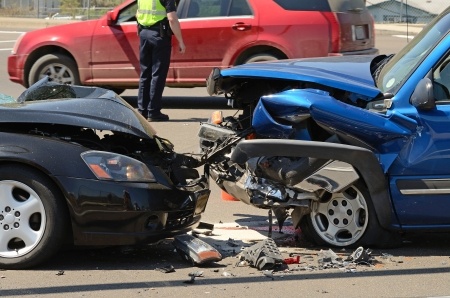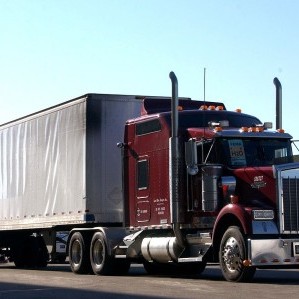
by Queener Law | Jan 8, 2018 | Auto Accident, Tennessee
When a motor vehicle collision occurs in Tennessee, all drivers are required to exchange important information, but some drivers refuse to provide the required information despite the law. The refusal to exchange essential information can be considered a hit-and-run. Victims of car accidents in which the drivers will not exchange their information may be able to enlist the help of law enforcement, an auto accident attorney, or their insurance company to track down the other driver and his or her insurance information.
Why Do Drivers Refuse to Give Information?
Drivers may refuse to provide their information for several reasons. They might not have insurance or a driver’s license. They might also be driving stolen cars or vehicles they didn’t have permission to drive. Some drivers may also already have multiple accidents on their records and withhold information to avoid higher insurance premiums. Finally, some drivers may be reticent to provide their information because they are under the influence of drugs or alcohol. No matter what the reason might be, it is best for people to avoid getting into a confrontation with the drivers and instead to take action to protect themselves.
What to Do When Drivers Refuse
When drivers refuse to provide their information, people should call the police. They should also remain calm and gather as much evidence as they can. Accident victims should also take photographs of the accident scene that clearly show the damage to both vehicles. Drivers should write down the license plate number, make and model of the other vehicle. If there are witnesses to the accident, they should write down their names and contact information. People should report the accidents to their own insurance companies. The companies may be able to identify the drivers from the license plate numbers and then obtain their insurance information. Even if the drivers will not initially provide their information, they may be more willing to give it when the police arrive. If the driver is uncooperative, people should simply do what they can to gather evidence and wait for law enforcement to arrive on the scene.

by Queener Law | Dec 27, 2017 | Auto Accident, Colorado, Kentucky, Tennessee
Because car manufacturers tend to design their vehicles to pass the existing safety tests, the Insurance Institute for Highway Safety recently instituted new tests that rate cars for passenger safety. In the past, manufacturers had focused on driver safety since that was what the tests looked for. The IIHS asserts that it is important to improve passenger safety so that it is equal to the safety standards imposed for drivers.
IIHS Safety Tests
The Insurance Institute for Highway Safety performs tests each year on newly released vehicle models. The tests are influential and let customers understand how safe the different models are so they can make informed purchasing decisions. Because of the importance of these tests, vehicle manufacturers tend to design their vehicles to pass them. In the past, the tests have focused on the safety of drivers. Recently, however, the IIHS has been concerned about making certain that the manufacturers also design their vehicles to be equally safe for passengers. It added passenger-side front crash tests to its safety testing regimen this year.
Test Results
The IIHS tested 13 vehicles with its new passenger side 40 mph frontal crash test. Of the vehicles that were tested, 10 received good ratings from the IIHS. Out of the remaining three, the Volkswagen Jetta was rated as acceptable while the Chevrolet Malibu and the Volkswagen Passat received ratings of marginal. The IIHS recommends that manufacturers optimize the safety of their airbags and headrests to equalize the safety of vehicles for passengers as well as drivers.
While enhanced safety measures won’t prevent all motor vehicle injuries from occurring, they can help to minimize the risks of serious injuries or fatalities when accidents happen. The IIHS designs its tests so that consumers can use the results as one factor in their decisions about which vehicles to purchase. People who are in the market to purchase new cars may now have access to more accurate safety ratings due to the changes. Because car manufacturers are aware that consumers pay attention to IIHS ratings, they might be led to add enhanced features to their vehicles to make them safer for all passengers.

by Queener Law | Dec 18, 2017 | Tennessee, Trucking Accident
Advanced safety technology in large trucks may greatly reduce the number of truck accidents in Tennessee and elsewhere, according to a new report. The AAA Foundation for Traffic Safety found that 63,000 truck accidents could be prevented each year if trucking companies installed safety technologies on all of the trucks in their fleets. The organization reviewed data about lane-departure warning systems, automatic braking systems, video safety systems and air disc brakes and recommended that companies install all of them.
Effects of Safety Technology
The AAA Foundation for Traffic Safety reviewed the literature of truck accidents and the data about various types of safety technology. They found that the installation of lane-departure warning systems in all of the trucks in the U.S. could save 115 lives, prevent 1,342 injuries and result in 6,372 fewer crashes each year. Onboard video safety systems would prevent 17,333 injuries, save 293 lives and prevent as many as 63,000 truck accidents annually.
The foundation also found that automatic brake systems could save 55 lives and prevent 5,294 accidents and 2,753 injuries. Finally, air disc brake installations could save 37 lives while preventing 2,411 accidents and 1,447 injuries. The foundation recommends that these systems be installed on all trucks to help to prevent truck accidents that cause severe injuries and death.
Why Aren’t the Systems Used More Often?
These technologies are relatively new and are treated as options instead of as standard equipment on new trucks. Some carriers choose to purchase trucks without these options to save money. In addition, many carriers have fleets of trucks that are older. They argue that the cost of retrofitting their fleets would be prohibitive. There are no current regulations that require that manufacturers include these systems on new vehicles or that companies install them on their existing fleets.
Despite the initial cost outlays, companies could derive several benefits by installing advanced safety technology in their fleets. They could help to prevent accidents, deaths, and injuries. The installation of safety technology could also save substantial amounts of money over the long term by reducing the number of claims and payouts. When truck accidents happen, a truck wreck attorney may represent injured victims to help them to recover damages from the trucking companies and drivers for their losses

by Queener Law | Dec 7, 2017 | Bicycle Accident, Tennessee
Two-thirds of hospitalizations and approximately 75 percent of fatalities that are caused by bicycle accidents are a result of head injuries. According to extensive research, one of the most effective ways to prevent head injuries in cycling accidents is to wear a helmet. Historically, helmets have been shown to reduce the risk of head injury by about 50 percent, and the risk of severe face, head, and neck injury by approximately 33 percent.
Bicycle Helmet Laws in Tennessee
In Tennessee, it is unlawful for any person under the age of 16 to operate a bike or be a passenger on a bicycle without wearing a protective bicycle helmet that is properly fitted and secured. It is also illegal for parents and guardians to permit children under 12 years of age to ride bicycles without helmets. Additionally, it is unlawful for businesses to rent or lease bicycles to kids under 16 unless they have a helmet in their possession at the time of the rental or one is provided with the lease. When serious injuries or fatalitiesoccur, parents, guardians, and businesses who violate these laws may be able to be held liable for the damages that are suffered.
There are currently no laws in place in Tennessee that govern the use of bicycle helmets by adults. Society has been thoroughly educated about the benefits of wearing a helmet when cycling, and although wearing a helmet lowers the odds of a serious head injury occurring, many adults still choose to ride unprotected. The risk of severe complications from head injuries caused by bicycle crashes increases with age, however, and adult cyclists should wear properly fitted helmets as well.
Choosing the Right Helmet
Smart decisions lead to safer outcomes. Cyclists should follow certain guidelines when choosing a helmet:
- Snug Fit –A helmet should fit snugly and not move when the head moves forward to back or side to side. Trying on a variety of helmets is suggested to assure a good fit.
- Good Ventilation – A helmet should have good ventilation to increase comfort, particularly in hot temperatures.
- Comfortable Weight – Although helmet weight does not vary tremendously, slight weight variations can make a difference in comfort levels.
- Enjoy Wearing – It is important to pick a helmet that is easy to wear, as it is more likely it will get use all of the time if the rider is happy with it.

by Queener Law | Nov 21, 2017 | Tennessee, Trucking Accident
In Tennessee, commercial truck drivers work long hours and may be distracted by many things beyond their cell phones. Truck drivers should avoid distractions while they are driving so that others who are traveling nearby will be safer. In addition to cell phones, drivers may be distracted by others who are traveling with them, eating, dispatch equipment, billboards, people outside of their trucks and more. By understanding the potential for and danger of distraction, drivers may be better able to focus their attention on the road and minimize their risks of causing accidents. A semi-truck accident lawyer may help victims who have been injured in crashes caused by distracted truck drivers.
Distractions to Avoid
According to the Federal Motor Carrier Safety Administration, 71 percent of crashes involving large trucks that were caused by truck drivers happened when they were engaged in other activities besides driving. By remaining focused on the roads, truck drivers can help reduce the risk of accidents. While cellphones are responsible for a large percentage of distracted driving accidents, a number of other activities are also distracting to truck drivers and should be avoided.
One of the leading causes of large truck crashes is driver inattention that results from distractions outside of trucks. These can include billboards, people, buildings and others. In 2006, a study found that as many as 80 percent of large truck crashes involved truck drivers who were inattentive within 3 seconds of the accidents.
Texting while driving is notoriously distracting, and it is illegal for commercial truck drivers. When people text and drive, their manual, cognitive and visual attention are all directed away from the road. Drivers should likewise not use their dispatching devices while they are driving. Instead, they should pull off of the road when they need to use these tools.
Some activities that might seem innocuous, like eating or drinking, are also highly distracting to truck drivers. One recent study found that driving while eating might be even more dangerous than driving while talking on a cell phone. It is better for drivers to wait and eat on their breaks.
Driver distraction is a huge problem that can lead to preventable accidents. A semi-truck accident lawyer may gather evidence that shows driver distraction caused truck accidents.

by Queener Law | Nov 13, 2017 | Auto Accident, Colorado, Kentucky, Tennessee
The Centers for Disease Control and Prevention reports that approximately 90 people die each day in the United States due to motor vehicle crashes. That number is almost double the number of roadway deaths of any other high-income country. Between 2000 and 2013, the U.S. reduced highway deaths by approximately 31 percent. Many analysts agree that vehicle crash fatalities could be further reduced in the U.S. by adopting proven strategies.
Who is at highest risk?
According to a report by the World Health Organization (WHO), 90 percent of crash-related deaths occur in low- and middle-income countries. In high-income countries like the United States, people from lower socioeconomic levels are more likely to be involved in a fatal car crash. Young males are three times more likely to die in a vehicle crash than young females.
Common causes of vehicle deaths
To effectively reduce the number of highway deaths, it is important to understand the causes. Doing so can help individuals, vehicle manufacturers and lawmakers address safety issues to minimize the risk of crashes and prevent serious injuries and deaths when accidents do occur.
- Speed is directly related to both the likelihood of having a crash and the probability that deaths will occur in the accident. A personal injury attorney can advise pedestrians or passengers who have been injured due to speeding of their rights and options.
- Driving under the influence of alcohol and other psychoactive drugs accounts for nearly one-third of all U.S. traffic-related deaths. A person driving after taking amphetamines is five times more likely to be in a fatal accident than someone who hasn’t.
- Proper use of safety equipment can significantly reduce fatalities. Wearing a motorcycle helmet reduces the risk of death in an accident by 40 percent. Wearing a seat belt reduces the risk of death for front seat passengers by as much as 50 percent.
- Distracted driving is an evolving problem as new technologies emerge. Drivers using phones are four times more likely to be in a crash. Drivers using hands-free devices are not much safer.
What can be done?
Erin Sauber-Schatz, Ph.D., M.P.H. is a team leader for the CDC’s National Center for Injury Prevention and Control. Erin says 10,000 lives could be saved every year by eliminating alcohol-impaired driving. An additional 3,000 deaths could be prevented by increasing seat belt usage to 100 percent.






